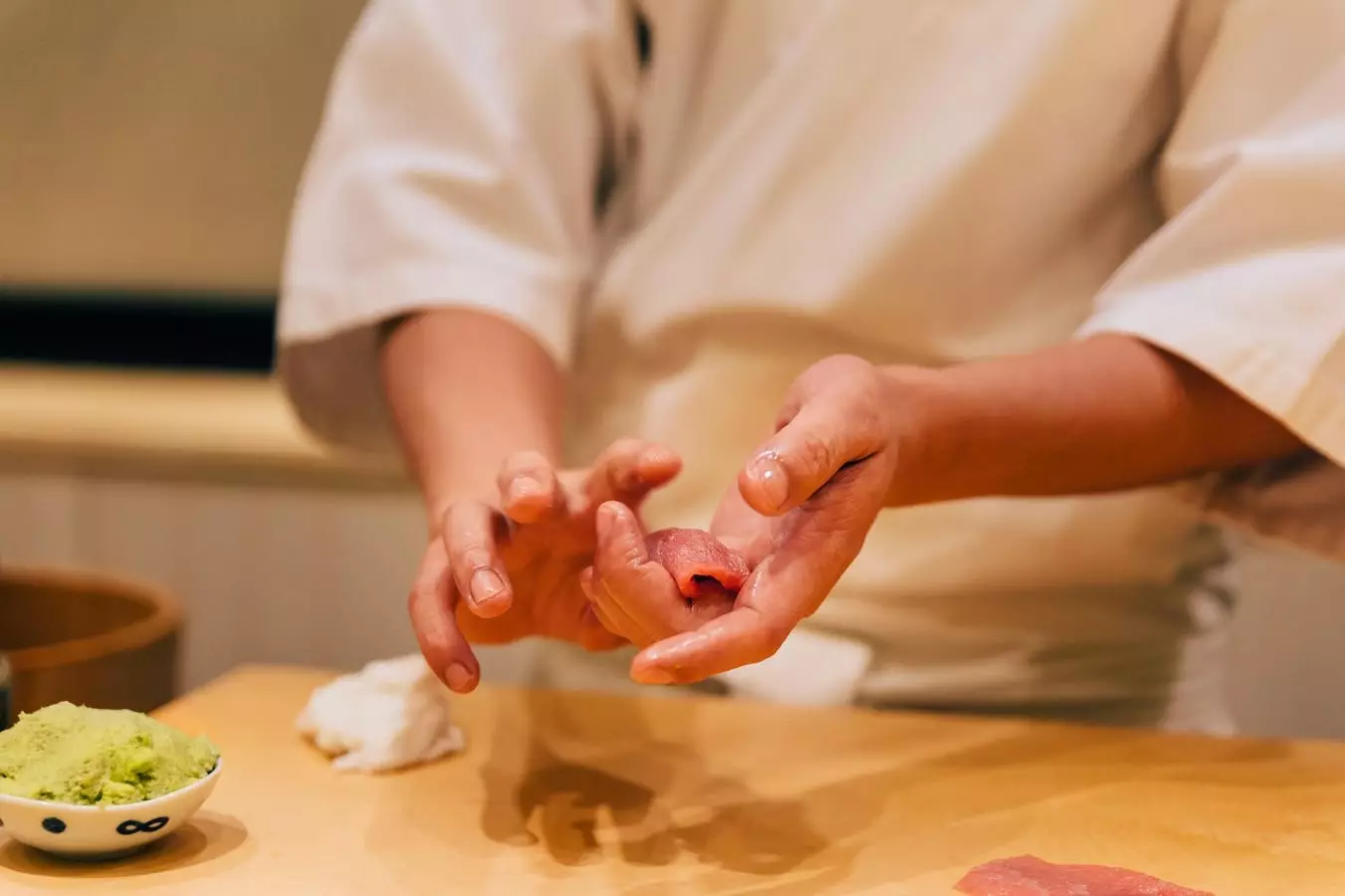Sushi has transcended its cultural origins to become a staple in American dining, combining tradition with innovation. In a decade marked by culinary shifts, the sushi restaurant industry in the U.S. has grown exponentially, with market revenue soaring to $27.9 billion as of 2022—a staggering 163% growth from 2012. This phenomenon has garnered attention not only for its economic implications but also for its cultural significance, as sushi has established itself as a favorite among consumers from various backgrounds. However, as demand skyrockets, the gap between supply and qualified sushi chefs widens alarmingly. This deficiency necessitates exploration into both the roots of the shortage and potential solutions that could reshape sushi education.
The Expertise Required for Sushi-Making
Creating sushi may seem straightforward, yet it is an art form steeped in precision and skill—attributes that take years to cultivate. Renowned sushi chefs often undergo rigorous training, following an apprenticeship model that can stretch into a decade. This prolonged journey equips them with not just culinary techniques, but a deep respect for the ingredients, especially the fish, which must be sourced responsibly and prepared to the highest standards. The documentary “Jiro Dreams of Sushi” illustrates these challenges, giving viewers a glimpse into the craftsmanship required in this culinary discipline. Yet, despite the growing interest in sushi, the traditional model of apprenticeship faces stagnation as new generations shy away from the lengthy commitment.
Compounding the shortage of sushi chefs is the increasingly restrictive visa policy implemented by the U.S. government. Hiring experienced chefs from Japan—a custom that many American establishments rely on—has become a formidable challenge due to fewer visas being issued to foreign workers. This dilemma is not exclusive to the United States; even domestically, Japan faces a decline in sushi chefs. The younger populace is increasingly drawn to alternative career paths that allow for seasoned employment without the daunting years of apprenticeship typically associated with sushi.
A Shift Towards Structured Education
In light of these barriers, the sushi industry is beginning to embrace a paradigm shift: moving away from traditional apprenticeship models towards structured culinary education. Institutions such as the Tokyo College of Sushi & Washoku are at the forefront of this educational evolution, providing formal training that appeals to both local and international students. The college opened its doors in 2016 and has already demonstrated impressive outcomes, reporting a 100% job placement rate by March 2024. Graduates not only find positions in esteemed sushi restaurants but also gain employment in luxury hotels and resorts worldwide, showcasing the breadth of opportunity available to trained sushi chefs.
A Western Perspective: Sushi Chef Institute
Echoing this evolution is the establishment of the Sushi Chef Institute in California, founded by Andy Matsuda in 2002. Matsuda’s journey is particularly noteworthy; hailing from a family of restaurateurs in Japan, he brought his expertise to the U.S. and subsequently sought to give back to the community that supported him during a personal health crisis. By offering short-term, intensive sushi courses, the institute caters to a rising tide of aspirants eager to enter the sushi realm, while also addressing the burgeoning demand from culinary enthusiasts, private chefs, and restaurateurs alike.
An Expanding Global Landscape
The demand for sushi chefs is not limited to American shores; internationally, culinary schools are rising up to fill the gap. With the opening of a Tokyo College of Sushi & Washoku branch in London, aspiring sushi chefs in Europe now have access to structured training that was previously lacking. This expansion emphasizes a growing global interest in sushi and validates the need for formal educational frameworks to ensure quality and sustainability within the industry.
Yoshihiko Shida, the chief instructor of the London branch, emphasizes the importance of creativity and understanding Japanese culinary fundamentals. As sushi continues to evolve and adapt across cultures, the responsibility lies with educators to challenge their students to innovate while respecting traditional methods. Shida’s approach reflects Japan’s historical willingness to integrate and reinterpret foreign culinary influences—an attitude that fosters creativity among a new generation of chefs.
As sushi continues to captivate countless palates worldwide, the industry must brace itself for the challenge of nurturing skilled chefs to meet the ever-growing demand. By transitioning toward structured sushi education and embracing the creativity of diverse culinary backgrounds, the sushi profession is poised not just to survive, but to thrive in the dynamic global culinary landscape.

